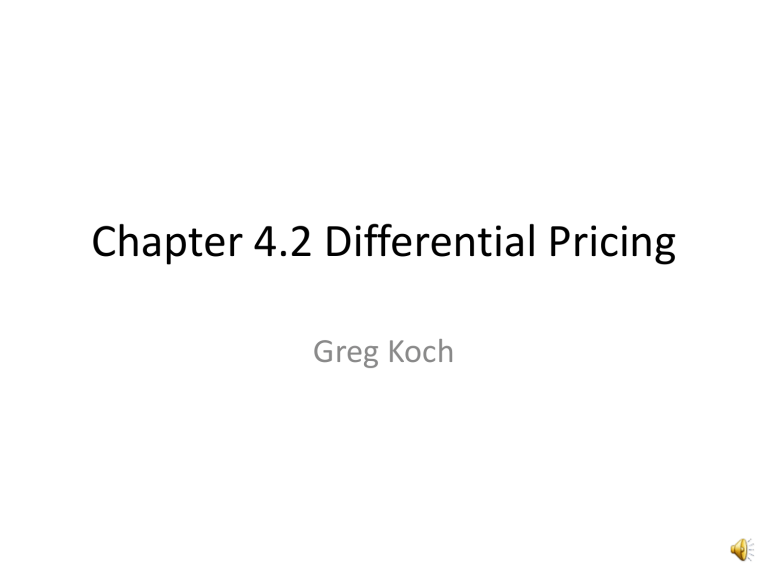Chapter 4.2 Differential Pricing Greg Koch

Chapter 4.2 Differential Pricing
Greg Koch
Objectives
• Differential pricing
• Willingness to Pay
• Market Segments
• Goals of Differential Pricing
• Traditional/ Restrictive Structure
• Simplified Structure
• Impacts of Pricing
Differential Pricing
• Present a range of fare product options
– Allows consumers to trade off price and restrictions
– Products geared towards different market segments
• Business travels willing to pay higher prices with no restrictions
• Leisure travels willing to deal with restrictions for a cheaper ticket
Willingness To Pay (WTP)
• The Maximum Price any number of customers will all pay for a specified product or service.
Price
P1
P2
Q1 Q2
Quantity
Market Segmentation
• Revenue is maximized by charging every customer a different amount exactly equal to their WTP
• Identify Different Demand Groups
– Not practical to know the WTP for every customer
– Instead Customers are split into Segments
• Segments have similar characteristics
– Trip purpose
– Price Sensitivity
– Time Sensitivity
Goals of Differential Pricing
Maximize Revenue:
– Sufficient market segments
• Customers pay WTP amount
• Airlines get maximum amount from customers
• Cheaper products allow people to fly who otherwise would not
– Avoid Diversion
• Use Service Amenities to attract Segments to paying a higher price
• Use Change Fees, Advanced booking, Saturday night Stay to keep customers with a higher WTP from buying cheaper tickets
Traditional/ Restrictive Airline
Structure
• To Avoid Diversion:
– Service Amenities
• Seats: First, Business, Economy Class tickets
• Separation: Special Check in, Lounges, assigned seats
– Restrictions
• Advanced Purchase
• Saturday night Stay
• Cancellation/Change Fees
Simplified Structure
• 2001 Dot Com Bust and Economic Recession reduced the willingness of Business Travelers to pay a premium for tickets
• Online Ticket Outlets made it easier to comparison shop for cheaper flights
• In Response the Airlines moved to Simplified
Fares
– Fewer Fare levels
– Often the Saturday night stay restriction is removed
Impacts of Pricing
• Differential Pricing led to great profits in the
‘90s due
• Differential pricing theory remains valid and in use today
• The Simplified Fare Structure was originally adopted by low cost carriers – increasingly legacy carriers have adopted it to reduce their losses in market share



